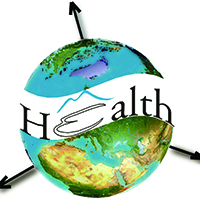Does the Geohealth domain require a body of knowledge?

All claims expressed in this article are solely those of the authors and do not necessarily represent those of their affiliated organizations, or those of the publisher, the editors and the reviewers. Any product that may be evaluated in this article or claim that may be made by its manufacturer is not guaranteed or endorsed by the publisher.
Authors
To answer the question if the Geohealth domain requires a body of knowledge (BoK), we need a general understanding of concepts associated with this field. Two years ago, the United Nation (UN) committee of experts on global geospatial information management identified “semantic- and ontology-linked data” as something that “will become essential to support the next generation of autonomous systems” (UN-GGIM, 2020). The term ontology is closely related to BoK. Unlike data models, ontologies are independent of application; they are generic, can be used in different ways and have clear advantages but they are challenging to create and even more difficult to maintain.
The brief description below summarizes what ontologies are, why they are needed to support linked data, what the role of the semantic web is, what is already going on within the Geohealth domain on ontologies and how a BoK can assist.
How to Cite

This work is licensed under a Creative Commons Attribution-NonCommercial 4.0 International License.








